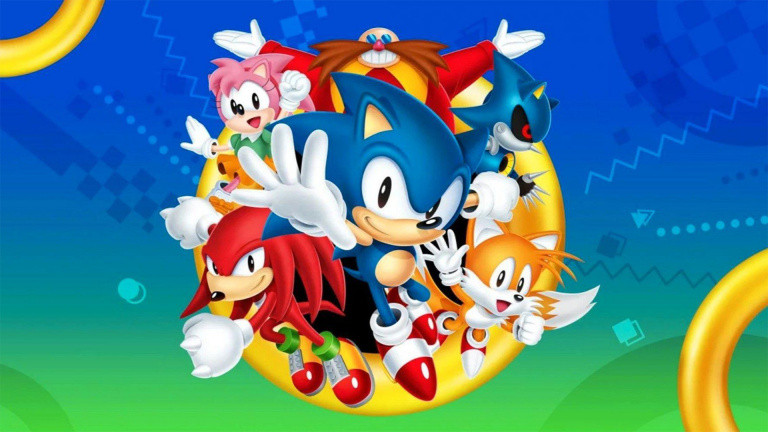
Sonic Compilations and the Origins of Sonic Origins
With the release of Sonic Origins on June 23, Sonic’s Classic games are seeing the newest of a long line of re-releases.
The recent release of Sonic Origins marks the newest in a long line of official re-releases for Sonic’s classic titles.
This new collection is out on all modern platforms and features widescreen ports of Sonic the Hedgehog, Sonic the Hedgehog 2, Sonic CD, several baffling DLC packs, and even a completely new port of Sonic 3 & Knuckles. That latter title is reappearing here after a decade missing in action from re-releases, with some changed music to boot.
If there’s one thing SEGA loves doing more than anything else, it’s re-releasing Sonic games. Sonic re-releases and compilations go back almost as far as Sonic himself. And while the new compilation looks fantastic – especially with the ports being based on the incredible mobile ports done by Christian Whitehead and Simon Thomley – not all Sonic compilations over the years have been created equal. And, as early reviews seem to point out, even Origins appears to be a mixed bag.
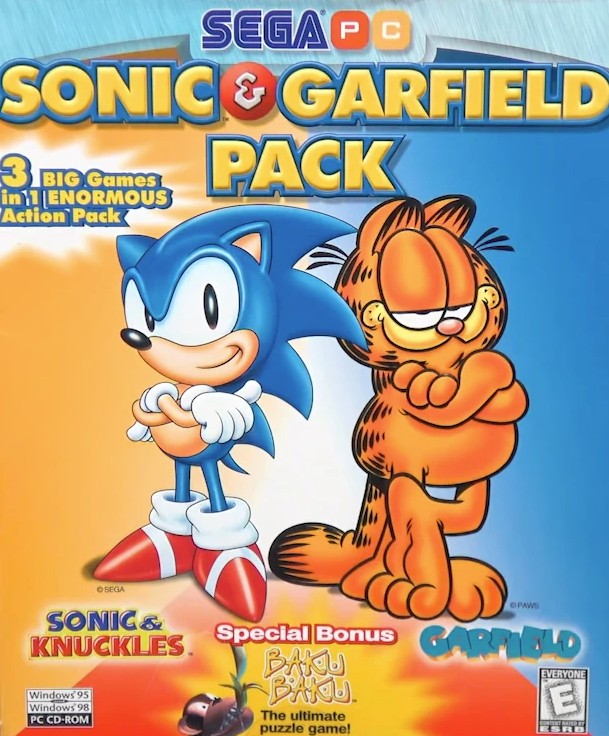
We’re gathered here today not to pump up Sonic Origins, but rather to dive deep into the long history of Sonic Compilations. To stop me from going insane, these are specifically Sonic compilations. If I had to include the likes of the Sonic & Garfield Pack on PC or Sonic’s Ultimate Genesis Collection, this piece would go on forever. And these are all specifically video games – the Sonic movie 2-pack that just came out doesn’t count.
All the games covered today are specifically compilations released by Sega themselves. They also contain either exclusively or nearly exclusively Sonic the Hedgehog games. And if you’d like to learn more about some of the collections featured today, there is a fantastic video essay on YouTube by MykonosFan that dives into this subject and covers several areas that I don’t touch on here.
But for now, let’s head back to 1995 and look at the earliest of these Sonic re-releases. From thrown-together value compilations to high-quality ports of often-overlooked titles, this is the history of Sonic compilations – or, if you will, the origins of Sonic Origins!

Sonic Classics 3-in-1/Sonic 2-in-1
The first-ever Sonic compilations came out around the same time as each other and were originally exclusively in Europe. The first of these, from July 1995, was the aptly titled Sonic Compilation for the Mega Drive.
Containing Sonic 1, Sonic 2, and Dr. Robotnik’s Mean Bean Machine, all the games are virtually identical to their original releases. Upon boot up, players are greeted with a blue selection screen, itself identical to the one used in the earlier Sega 6-Pak release (which, by the way, also featured Sonic 1).
There’s no way to get back to the selection menu from within a game but, as this is the Genesis, resetting the console is not much of a problem. This first Sonic-centric compilation is also notable for being renamed and released in North America, where it was called Sonic Classics 3-in-1. The American version is notable for taking nearly two years to come over for Europe – quite the wait for a collection of already easily accessible games.
What never left Europe was Sonic’s one and only compilation on the Sega Game Gear. This first portable Sonic collection was Sonic 2-in-1, featuring the horrible Game Gear version of Sonic Spinball and the hard-as-nails 8-bit version of Sonic 2.
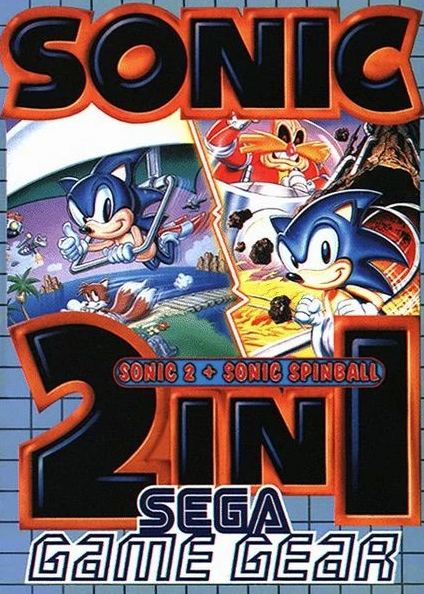
For some reason, SEGA decided this one wasn’t even worth giving a selection screen. Instead, whatever game the cartridge boots shifts every time you turn on the Game Gear. So, if you shut off a game of Spinball, the next time you turn on your Game Gear you’ll get Sonic 2, and vice versa.
Other than that, though, there’s nothing too notable about this bundle. Then again, it didn’t need to be much more than what it is.
The Game Gear, like the Master System before it, was much more popular in Europe than it was in North America or Japan, which probably explains why this compilation never left the European PAL region. It’s also a rather rare Game Gear release nowadays, and copies on eBay routinely sell for nearly $50.
That’s considered expensive for a Game Gear game nowadays. Even in 2022, SEGA’s battery-guzzling grey brick remains pretty unpopular. That’s a shame, as it had some real gems – even if these two Sonic games aren’t among them.
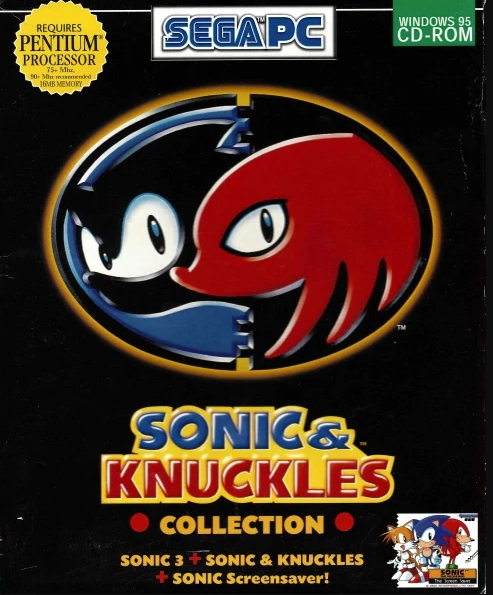
Sonic & Knuckles Collection
The Sonic & Knuckles Collection is worth mentioning here even if it is only debatably a collection. Infamously, Sonic the Hedgehog 3 was split in two during development, with the resulting games being Sonic 3 itself and the following Sonic & Knuckles.
The Sonic & Knuckles cartridge also featured a lock-on feature, that allowed for games to be placed on top to gain certain features. Attaching Sonic 3 would gain the full Sonic 3 adventure – now titled Sonic 3 & Knuckles. Attaching Sonic 2 would all you to play as Knuckles in Sonic 2. Attaching any other game would generate new levels in Sonic 3’s blue screen special stage mode, with Sonic 1 giving access to a nearly limitless number of these levels at once.
It was a good setup and sold well, though any future Sonic 3 re-releases were going to be awkward, due in part to the soundtrack. During development, Michael Jackson was brought in to work on Sonic 3’s soundtrack, though he would ultimately be uncredited. Complications with music rights meant that trying to port Sonic 3 to any platform could be potentially tricky.

In fact, music reasons are why Sonic 3 saw no new re-releases between Jackson’s death in 2009 and Sonic Origins in 2022. If SEGA’s going to re-release S3&K, it better feature that fantastic original soundtrack…right?
Well, as it turns out, the soundtrack was altered for Sonic 3 & Knuckles’ first release on PC: Sonic & Knuckles Collection from 1997!
This supposed compilation features Sonic 3, Sonic & Knuckles, the Blue Sphere mini-game, and Sonic 3 & Knuckles. Which is to say, all the fun of the Genesis release minus Knuckles in Sonic 2.
Playing this one on a modern PC initially seems like a nightmare. The speed of the game itself is tied to your CPU clock speed, meaning that the game will run all sorts of way-too-fast without having a fan-made patch applied.
Besides that, it initially seems like a straight port of Sonic 3 on PC, albeit with a ‘90s-tastic looking launch wizard and a MIDI soundtrack, plus some sweet-looking Sonic screensavers to make your Windows 95 PC look way past cool.

That is until you get farther into the game and start noticing some soundtrack differences. The themes from Carnival Night Zone, IceCap Zone, Launch Base Zone, and the Sonic 3 credits theme are all different than in the originals. It seems that Michael Jackson’s involvement has taken its toll, and these themes have been replaced by completely original music tracks.
Except, it’s not that simple. In November 2019, a prototype version of Sonic 3 dating from November 1993 was released onto the internet, seemingly coming from before the height of Jackson’s musical involvement. As it turns out, the versions of the aforementioned music featured in this prototype are the same ones later featured in the Sonic & Knuckles Collection.
Was the Sonic & Knuckles Collection based on a prototype version of Sonic 3? Were the music tracks changed back to their beta variants for this release due to issues involving Michael Jackson’s development involvement? That I don’t know.
However, what I do know is that this collection of technically one game was fairly popular. It would even see a budget re-release in 2000, with that being handled by Expert Software in the US and Xplosiv in the EU. Overall, while not a beefy compilation, it’s an intriguing port of a fantastic game.

Sonic Jam
Probably one of the best done and extras-filled Sonic Compilations has to be Sonic Jam for the Sega Saturn. This release not only featured ports of Sonic 1, 2, and 3&K to the SEGA Saturn but also featured what is debatably Sonic’s first 3D platforming experience.
Released in 1997, Sonic Jam seemed like a response to a glaring problem in the Saturn library: A lack of any fully original Sonic adventures. Sure, there had been Sonic R – a racing game – and Sonic 3D Blast – a Genesis port – previously. But by 1997, the original planned fully 3D Sonic title for the Saturn, Sonic X-Treme, was dead. Development had been axed over a year prior. The closest thing to a new Sonic platformer on the Saturn was perhaps the rather experimental NiGHTS Into Dreams, which itself was developed by Sonic Team.
With no new Saturn Sonic games on the horizon and sales of the Saturn console slumping, it made sense for SEGA to instead turn to the past. And instead of featuring more emulations of the Genesis games, the versions featured in Sonic Jam were re-built from the ground up for the Saturn.

This allows for several changes to be made to these original games. For starters, all the extra lock-on content from Sonic & Knuckles can be explored just by going through a couple of menus. Sonic’s iconic Spin Dash ability, originally introduced in Sonic 2, can also be used in Sonic 1 now. This is the first of many, many instances of the Spin Dash being put into new releases of Sonic 1.
Perhaps the weirdest of the new additions is the inclusion of “Easy” modes for all the classic games. The main difference between this new mode and the traditional gameplay experience is that bosses now take fewer hits and roughly half the levels in each game get removed. If you ever wanted to beat Sonic 2 with minimal effort in under 10 minutes, this is the mode for you!
There’s also a “normal” difficulty, which splits the difference between the original game designs and the easy mode changes. A time attack mode is also present along with some glitch fixes. This is particularly noticeable in Sonic 3. If it weren’t for some parts of the games now suffering from some decent slowdown and some sound effects sounding borderline bitcrushed, it’d be fair to call these some of the best versions of the Genesis Sonic trilogy.
Not to mention the sheer amount of extras! Original artwork scans, manual scans, formerly Japanese-exclusive ads and animations, and even a comprehensive timeline of the whole Sonic series up to that point, which itself includes international box scans, rare promotional photos, and even some references to the Sega Pico.
Even the opening and ending cutscenes from Sonic CD are here! I have no idea why that game couldn’t be included here – the Saturn was certainly more than powerful enough for it – but the presentation that all these extras are wrapped up in nearly makes up for it.
I’m particularly partial to the page-by-page manual scans. Being able to virtually flip through not just the classic Sonic manuals from North America, but from all around the globe. being able to zoom in on the artwork within these digital manuals is truly wonderful.

Instead of a generic menu, all the extra content is available via a 3D hub world called Sonic World. In this Green Hill-esque area, you take control of Sonic as you run around to buildings containing all the extra goodies and even partake in basic platforming challenges. The are speed-based ring collection challenges, plenty of nooks and crannies to explore, and even Tails is there! Plus, the music that plays here is blissfully catchy.
Sonic World is definitely a welcome addition, even if most of its content can be explored within an hour. It’s a glorified tech demo that has been shoved into a Sonic compilation, and I would probably be upset if it weren’t so charming. According to an interview from 2014, it was based on a way-early build of Sonic Adventure from right before development shifted to the Dreamcast.
From the minute you boot up Sonic Jam, you’re greeted with a high-quality 3D animation and some absolutely ‘90s Sonic music. The compilation oozes charm and is probably one of the most unique Sonic compilations out there.

I also have to stress – this game was exclusive to the Saturn. There was a game called Sonic Jam for the Tiger Game.com, but it’s a nearly completely original Sonic game. And, to be fair…
No, I can’t say anything nice about that game. It’s dreadful. It’s a Sonic game that can barely crack five frames per second and that has a soundtrack that sounds akin to sitting on a keyboard.
As for the Saturn compilation, it’s a wonderful package. Just be warned that, like most other Saturn games, it’s up there in price. Even when I bought my copy about seven years back, I found it more economical to just import the Japanese version.

Arcade Collection/Sonic Speed Pack/Sonic Action Pack
This is likely one of the oddest collections I’m covering today. It’s also likely the most obscure. Developed by SEGA and released in 2000 by Empire Interactive solely in the UK, this is the fantastically titled Arcade Collection.
Honestly, this is the most basic form of the word “compilation.” There are two versions, one with three discs in the red, budget-y looking box and one with six. And there’s a whopping one game on each disc!
The three-disc version features Sonic R, Sonic 3D Blast (or rather, Sonic 3D: Flickies Island as this is Europe), and the original Sega Rally. The six-disc version adds Virtua Tennis, Virtua Cop 2, and Virtua Fighter 2 – meaning the six-disc version doesn’t even fit my earlier-defined definition of a “Sonic Compilation.”
That said, the versions of Sonic 3D Blast and Sonic R are decent enough. They’re straight-up re-releases of SEGA’s earlier PC ports. The PC version of Sonic 3D Blast is basically a straight port of the Saturn version, complete with the arranged soundtrack that wasn’t originally present in the Genesis version.

Somewhat lost in translation, though, are the fully 3D special stages exclusive to the Saturn version. The PC versions still feature the half-pipe design that was common in Sonic special stages since Sonic 2, but the detail is way dialed back from the Saturn version of 3D Blast, as is any sense of visually pleasing design.
As for Sonic R, while it’s gameplay-wise virtually identical to the Saturn release, the PC version features some graphical updates and a more stable framerate, making it easily superior to the original.
This is a decent re-release of some already decent Sonic ports. If Sonic R and 3D Blast (or Sega Rally) are your thing and you ever stumble across this compilation, you likely will not be disappointed.

That same year and an ocean away, another re-release of PC Sonic games came out – this time the American-exclusive Sonic Action Pack. The concept here is similar, though now published by Sega themselves, and instead of Sega Rally and Sonic 3D Blast there are the PC versions of Sonic CD (which features the cutscenes at a higher resolution than on the Sega CD) and the Sonic & Knuckles Collection. Some versions of this pack also included Sega Smash Pack 2 as well for good measure, which itself is a pretty solid collection of previous Sega PC releases.
For those wanting the same experience as those in the UK had, a year prior Expert Software brought out the Sonic Speed Pack stateside, which featured the exact same ports of Sonic 3D Blast and Sonic R.
As you can see, Sega really liked re-releasing Sonic R on PC during this time.
Again, they’re decent re-releases. But then again, the games here are the exact same as they had appeared on PC previously.

Sonic Adventure DX
It may come as a surprise to some longtime Sonic fans, but Sonic Adventure’s 2003 re-release on the GameCube is also debatably a Sonic compilation. Along with being a (literally) glossy-looking port of the 1999 original with nearly 1:1 gameplay, it also features a new mission mode, a refined Chao Garden, and, notable for today, ports of all 12 of the Game Gear Sonic titles.
Appearing here as emulations, this was the first time some of these games got re-released in the west. The twelve games in question are Sonic 1 (8-bit), Sonic 2 (8-bit), Sonic Chaos, Sonic Triple Trouble, Sonic Spinball (8-bit), Sonic Drift, Sonic Drift 2, Sonic Labyrinth, Tails’ Skypatrol, Tails Adventures, Sonic Blast, and Dr. Robotnik’s Mean Bean Machine (8-bit).
However, as Sonic Adventure itself is the main attraction here, these games have to be unlocked. There are emblems spread throughout the overworld and levels of the main game, and new Game Gear games will unlock every 10-20 emblems that are collected.

The games play nearly identically to the originals, though the GameCube’s d-pad is nowhere near as good as Game Gear’s. Hitting the L and R buttons can increase and decrease the game’s screen size, and it’s even possible to switch the games over to their Japanese versions. Plus, the games that have 2-player modes keep those intact here, meaning that you can grab a friend and a second GameCube controller and play some competitive 8-bit Mean Bean Machine!
While perhaps not the best way to seek out these games officially, it’s definitely a solid way to play them if you have them on hand. The same year as the GameCube release, it’d get a PC port as well, which is also great if you’re into modding.
Just be warned – though Sonic Adventure DX has since seen a Steam re-release, that’s different from the original 2003 version and does not include the Game Gear games. As for why they were removed, I have no idea.

Sonic Mega Collection/Mega Collection Plus
One of the beefiest Sonic compilations to date is Sonic Mega Collection. Released on the GameCube in 2002, it features ports of classic Sonic games running through an emulator that itself was developed by Sonic Team.
This features nearly perfect ports of Sonic 1, 2, 3, Sonic & Knuckles, Sonic 3D Blast (the Genesis version), Sonic Spinball, and Dr. Robotnik’s Mean Bean Machine. And then, on top of that as unlockables, there are also all the lock-on modes from Sonic & Knuckles, including Sonic 3 & Knuckles, along with the arcade game Flicky and Ristar.
A solid compilation, even if some pretty annoying unlock requirements have to be met to unlock every game on the disc. To unlock Flicky, for example, you have to either have a Sonic Adventure 2: Battle save file on your memory card, or you have to have booted up Dr. Robotnik’s Mean Bean Machine at least 30 times. It just comes off as an excessive barrier to me.
I’m not too upset, though, as the whole package is still a joy to play through. It’s all wrapped up in a gorgeous presentation, with menus that walk the line between being annoyingly flashy and paying homage to the series itself. On top of that, it’s packed to the brim with extras. Of all the games included, my favorite here is definitely Ristar. It’s not a Sonic game, sure, but it was developed by Sonic Team and contains a lot of the charm and solid platforming that made the Genesis-era Sonic games so memorable. It’s a shame that it, too, takes forever to unlock.
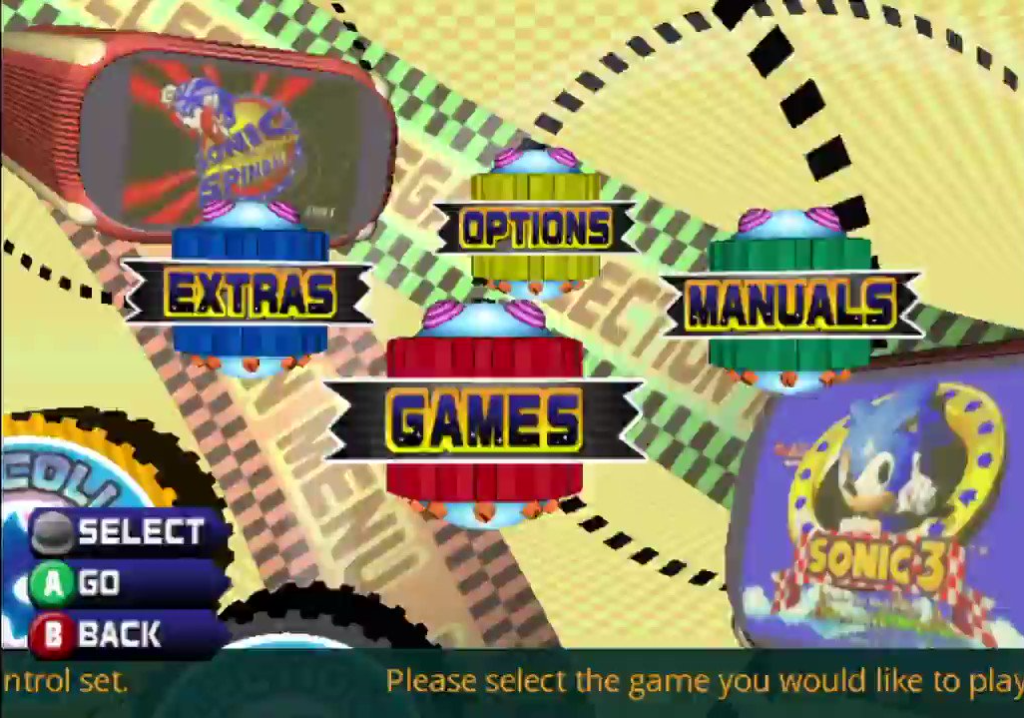
Sonic Mega Collection, thankfully, includes a variety of extras to distract from the absolute chore that is trying to unlock the extra titles. The art scans on this disc include over 150 different Archie Sonic comic covers, profiles, and official artwork for characters all the way up to Sonic Advance 2, game packaging and manual scans, and even scans of promotional cards from Japan.
There are also promo trailers for Sonic Adventure 2: Battle and Sonic Advance 2 – both recent releases at this point – and a History of Sonic Retrospective video. The only real oddity here is that, once again, the intro and ending movies from Sonic CD are present, but not the game itself.
In an interview with director Yojiro Ogawa, he noted that Sonic Team intended for Mega Collection to serve as an easy way for children who were just getting into Sonic post-Dreamcast to be introduced to the classic titles. The level of love and care here is obvious, and it appears the final release was cut down from what the development team wanted. According to Sonic co-creator Yuji Naka, thanks in part to storage constraints Sonic R, Sonic Shuffle, Vectorman, and even Sonic CD were all planned for release here but had to be cut.
What’s unexplained here is why The Ooze and Comix Zone, which appeared in the Japanese version of the collection, were cut when it was brought overseas. If I had to guess, perhaps there were, at this point, worries about losing an “E” rating from the ESRB if they were included.

Sonic Mega Collection would see a new release with even more content just under two years later. After the success of the original release on the GameCube, SEGA made plans to bring the compilation to the original Xbox and PlayStation 2 as well. To make up for the gap in release dates, additional content was added to this new release.
Arriving on store shelves in 2004, Sonic Mega Collection Plus included not only the missing Comix Zone and The Ooze, but also added six of the Game Gear games. Available here were Sonic 1 (8-bit), Sonic Labyrinth, Sonic Drift, Sonic Chaos, Sonic Blast, and the 8-bit version of Dr. Robotnik’s Mean Bean Machine, all in addition to the games on the original collection. Unfortunately, the crazy unlock requirements for the non-Sonic titles and for the extra Sonic 3/Sonic & Knuckles modes remain.

The extras were also beefed up, with storyboards and cutscenes from the then-new Sonic Heroes being included alongside all of the original content. Perhaps the cherry on top was, that at launch the whole collection was only $20. At that price, 17 games and a barrage of extras were a no-brainer at the time.
And while there are definitely better ways to play most of the Genesis games nowadays, this is one of the most recent compilations to feature Game Gear Sonic games, even in 2022. It may sound odd as this is just a collection of old games, but I find the Mega Collections to be oddly nostalgic as well.
While I originally played Sonic 1 on a hand-me-down Genesis, this compilation was my original introduction to Sonic 2, S3&K, and even Ristar. Perhaps that’s why I still find myself returning to it from time.

Sonic Gems
Surprisingly, before I played Sonic Mega Collection, I played a more obscure Sonic compilation filled with more obscure games. Sonic Gems was released on the GameCube in 2005 (and on the PS2 as well outside of North America) and was basically an attempt by Sonic Team to put everything from the ‘90s that didn’t make it onto the Mega Collections into a compilation of its own.
Like the Mega Collections, Yuji Ogawa claims that the Gems compilation was also intended to introduce younger players to Sonic. However, the package here feels much more geared towards hardcore fans due to its rather obscure content.
Originally in development, Sonic Team wanted this to serve as a way to port the arcade game SegaSonic the Hedgehog to modern consoles. However, that title relied on trackball controls, and it was eventually it was dropped due to Sonic Team finding it too difficult to translate that control scheme over to a GameCube controller.

The 32X title Knuckles’ Chaotix was also considered at one point. Why it wasn’t included so far is unknown.
Instead, we got a port of another Sonic arcade game, Sonic the Fighters, which was rebuilt from the ground up for the GameCube. In this obscure fighter, you play as one of several Sonic characters – some who only appear in this title – as you fight each other for the chance to lay the smackdown on Dr. Robotnik.
It’s not very good. It feels less like a proper fighter, and more like an excuse to mash buttons.
What redeems Sonic Gems Collection is the other games on board. Sonic R is present here, and it’s a straight port of the PC version. Making its first-ever console re-release appearance here is Sonic CD. This is a direct port of its PC version as well, complete with the higher resolution cutscenes.

Along with these three titles come manual and artwork scans, game hints, officially licensed remixes, several history videos, and even the six Game Gear games that failed to make it onto Mega Collection Plus.
What makes Sonic Gems especially odd is its inclusion of unlockable non-Sonic Genesis games. In North America, the two Vectorman games were present here. However, in Japan, Bonanza Brothers and all three Streets of Rage games were included as well.
While Vectorman definitely has his fans, many at the time were disappointed by the removal of the four Japanese-exclusive titles. According to SEGA, they were replaced due to worried about the game being bumped up to a “T” rating by the ESRB, but this did little to quell the disappointment.
This has caused the Japanese version of Sonic Gems to become rather sought after. Along with containing debatably the best version of Sonic R, for years it was one of the easiest official ways to play the Streets of Rage games, in particular the increasingly difficult-to-find third entry.

The only downside is, like with the Mega Collections, some of the games have crazy unlock requirements. For example, the aforementioned Streets of Rage 3 requires both Streets of Rage 1 and 2 to be unlocked, at least 12 logged hours of gameplay on the collection as a whole, and for the games on the collection to have been started up at least 70 individual times. It’s at this point I’d recommend just using a GameCube Action Replay to skip this and make the whole collection playable.
Sonic Gem also contains a wide variety of unlockables – mostly the usual movie and artwork fare, though this time featuring some nods to truly obscure Sonic releases such as SegaSonic Popcorn Shop. Weirdest of all, there are time-limited playable segments from several other Sonic games, notably the Genesis titles.
While definitely not a “must-own” for any Sonic fan, it’s definitely a high-quality compilation that provides a lot of unique gameplay experiences. It may not be the best Sonic compilation – seriously, Sonic the Fighters is pretty lackluster, and certainly not a game I’d pick to headline a release like this – but it’s definitely a solid collection of some rather obscure games. Most importantly, for a long time, this was by far the easiest way to get ahold of Sonic CD, a game often considered the lost fourth member of the Genesis Sonic trilogy.

Sonic Classic Collection
I first learned about Sonic Classic Collection after finding a copy in a Walmart clearance bin circa 2013. Released on the Nintendo DS in 2010, the game list here is the same as Sonic Jam on Saturn, sans Sonic World.
Instead of straight-up ports, these games instead run off the GenesisDS emulator, with the whole package created by developer The Creative Assembly. A special edition was also released in parts of Europe and Australia, featuring a commemorative figure, some art cards, and a collectors’ tin.
On one hand, it tries its best to be a solid yet slim collection of these classic titles. All the games have save functions present, and the main menu even features the music from Sonic World.
However, it also has some rather odd changes. For one, the main menu refers to Sonic 3 & Knuckles as “Knuckles in Sonic 3”. There are also some references in the collection to Sonic 3D Blast and Sonic Spinball, despite those games not being present.
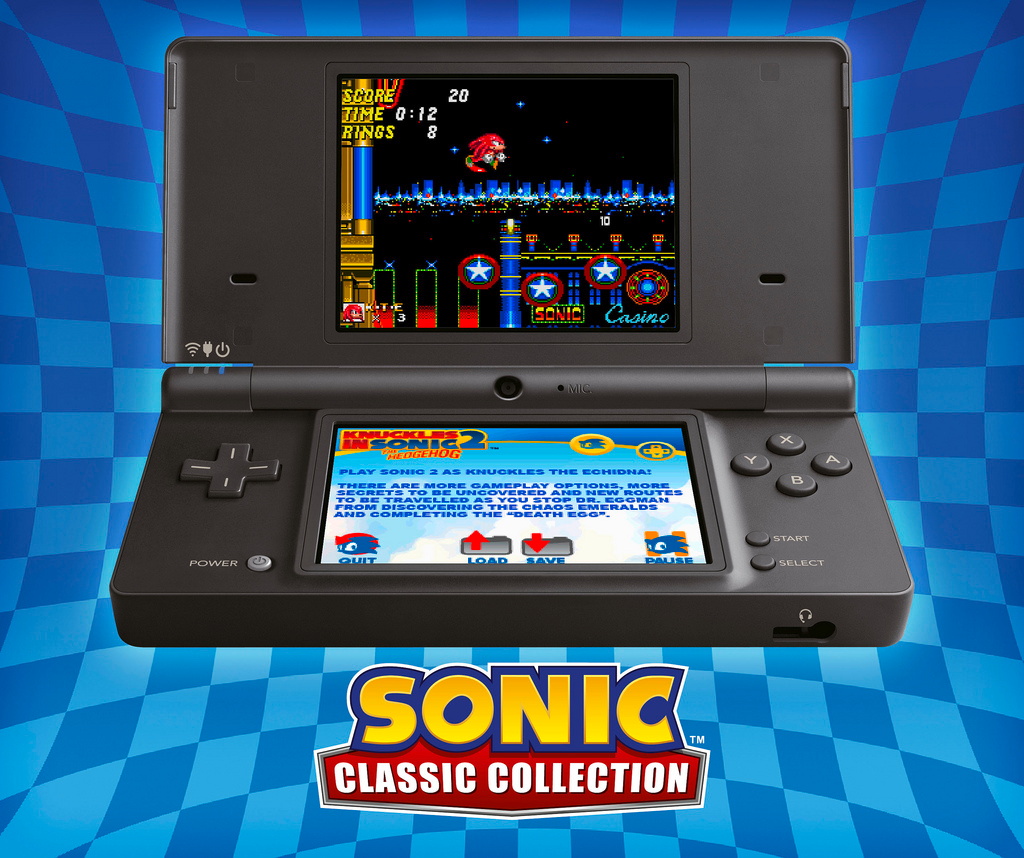
Concerningly, the gameplay window here looks downright weird. I wish there was a better way to put it, but it’s very clear that these games were intended for somewhat different aspect ratios than usually seen on the DS.
The Nintendo DS has a much lower video resolution than the Genesis, which led to the games being cropped in here. It’s not as bad as it potentially could have been thanks to some trickery from the developers, but it’s still very odd to look at as someone familiar with the originals. Thankfully the effects aren’t as bad as in the dreadful port of Sonic 1 to the GBA from 2006, and the slowdown is pretty minimal, but the added difficulty in seeing oncoming obstacles definitely doesn’t do this collection any favors.
For $5 in a bin at Walmart, Sonic Classic Collection is a pretty good deal. Otherwise, there’s no real reason to try it out.

The Modern Mobile Ports
This is not a Sonic collection per-se, but these are the basis for the versions of the Sonic games featured in Origins.
I mention them here as I feel the content on offer in these versions of the classic SEGA Genesis Sonic games may offer a sneak peek at what is to come in Sonic Origins. Besides, the last compilation was disappointing and I want to end on a high note.
Between 2011 and 2013, three different Sonic games received ports to mobile phones. Except, these weren’t basic emulations – they were full-on rebuilt ports that bordered on 1:1 remakes for modern platforms.

Created by longtime Sonic fan Christian Whitehead, who got his start making Genesis-style Sonic fangames, the first of these was a port of Sonic CD that reached not only mobile phones but also all modern platforms of the time. From the Xbox 360 to Steam to Sonic Origins, there’s no shortage of ways to play this port nowadays.
This version included modern soundtracks, the game itself is presented in a properly scaled widescreen 1080p format, fan-favorite character Tails is playable, and arguably some of the most responsive touch screen platforming controls out there.
This was followed in 2012 by an iOS and Android port of Sonic 1, this time coming with a sleek black and white menu system that combined elements of ‘90s Sega boxart and popular modern art styles, time attack modes, a spindash for Sonic, and even a new seventh special stage that allowed Super Sonic – who was introduced in Sonic 2 – to be playable in Sonic 1. Throw in a fully playable Tails and Knuckles and you have easily one of the best versions of Sonic 1.

Much the same can be said of the Sonic 2 port from 2013, except it goes a step further and adds in the cut Hidden Palace Zone. Hidden Palace was a level cut from Sonic 2 during development, despite being mostly complete. The version in the iOS and Android release of Sonic 2 even has a new original boss battle, complete with Dr. Robotnik playing the trombone.
For the Sonic 1 and 2 ports, Whitehead was joined by another prominent member of the Sonic fangame and romhacking community, Simon Thomley, known for his work on the Sonic Megamix project. Later in the 2010s, Whitehead and Thomley would join forces again to create the critically acclaimed Sonic Mania.

However, they would also do work on a version of Sonic 3 & Knuckles, though it would never see a mobile release. Thomley has mentioned on Twitter that the version of S3&K there is based on their work, though he and Whitehead are not directly involved this time around. Going back to a 2018 interview I did with Thomley, he confirmed that while he did have a platforming project in the works, “No, it’s not Sonic this time.”
Still, these ports of Sonic CD, 1, and 2 are just incredibly solid and arguably the best versions of these games. They’re playable proof that Sonic Origins is being built off an incredibly strong foundation.

The Rest
The rest of the Sonic compilations up to today have either been double packs or more completely 1:1 collections of PC Sonic ports.
To go through a few, there was the 2009 Sonic PC Collection which only came out in Australia and New Zealand, and was released with a commemorative mouse and mousepad as the Sonic Anniversary PC Pack in 2011. This featured Sonic Riders, Sonic Heroes, Sonic Adventure DX, and Sonic Mega Collection Plus. Truly, featuring a compilation inside a compilation is the peak of video game re-releases.
There was also the Sonic Mania/Team Sonic Racing Double Pack for the Xbox One and Nintendo Switch, featuring versions of Team Sonic Racing and Sonic Mania that are identical to their original releases on that console. The only thing of note is that on Switch at least, the games appear like you have two cartridges inserted at once instead of as one package.
That’s not to mention all the 2-in-1 re-releases on the Game Boy Advance and all the various Steam Sonic bundles.
Oh, and the plug ‘n plays. Sonic has definitely had a few dedicated plug ‘n play consoles.

SEGA really does love re-releasing Sonic games any chance they can, don’t they?
I’m sure I’ve missed at least a couple, but this is the bulk of Sonic’s re-releases. It’s also all the ones I’ve either managed to get my hands on or at least encountered in person.
While I haven’t had a chance to play Sonic Origins yet, these compilations, along with individual ports of the SEGA Genesis Sonic games for platforms from mobile phones to the Nintendo Switch, show just how massive of a reach Sonic has had over the years. With the release of Sonic Origins now, I’m confident that SEGA will keep on re-releasing these games on whatever new platforms come out for years to come.

